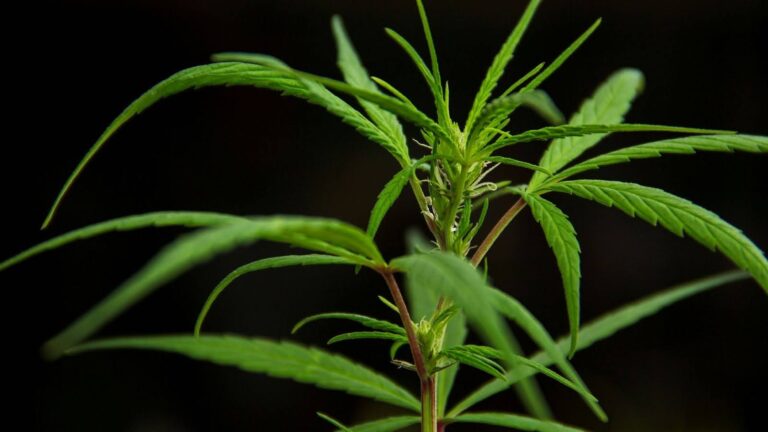Are you struggling with stunted cannabis plants or pale leaves that can’t be restored? Maybe you’ve fine-tuned your light schedule, nailed your watering routine, and balanced your nitrogen and potassium. You’ve put in the work, yet something still feels off. Growth is sluggish, leaves look washed out, and those once-promising buds aren’t developing as expected. It’s frustrating when the results don’t match the effort.
This is when many growers start second-guessing everything: the lights, the nutrients, even the entire setup. But often, the real issue is something less obvious – micronutrients. These trace elements may be needed in tiny amounts, but their impact is huge. They’re vital for photosynthesis, enzyme activity, and nutrient movement throughout the plant.
Let’s explore what micronutrients actually do, why your cannabis plants need them, and how to fine-tune your feeding strategy for healthy, vigorous growth from seed to harvest.
Why Micronutrients Matter for Cannabis
Micronutrients are like backstage crew members at a concert. You rarely see them, but without them, nothing works. In cannabis plants, these trace elements quietly drive essential functions that determine whether your growth is a success or a struggle.
So why do micronutrients matter so much?
- They make macronutrients useful: Without micronutrients, your plant can’t effectively process nitrogen, phosphorus, or potassium. They act like facilitators, ensuring the big players can do their jobs.
- They power vital functions: Micronutrients are deeply involved in photosynthesis, enzyme activation, and energy transfer. They’re needed to trigger processes that keep the plant growing and adapting.
- They support resilience: A well-fed plant is a strong plant. Micronutrients strengthen cell walls, enhance stress resistance, and improve your plant’s ability to bounce back from pests, temperature swings, or underwatering.
- They shape quality and yield: Plants with the right balance of micros produce fuller buds, stronger roots, and more consistent growth patterns. Deficiencies, even minor ones, can mean smaller yields and weaker flower quality.
- They regulate hormonal activity: Micronutrients influence hormone production, which controls key growth phases like flowering and root expansion. An imbalance here can delay bud development or weaken plant structure.
- They maintain internal balance: Micronutrients help buffer excesses or deficiencies in other nutrients, keeping the overall plant metabolism stable and efficient.
- They drive nutrient mobility: Some micros are essential for moving other nutrients through the plant. Without them, your plants might absorb nutrients but not distribute them effectively.
The tricky part is that deficiencies can sneak up on you. The symptoms might not appear until the plant is already under stress. Leaves may look fine one week and start curling or fading the next. That’s why it’s important to understand micronutrients not just as a troubleshooting tool but as a proactive part of your feeding strategy.
So, what is the difference between micronutrients and macronutrients? Let us understand this in detail.
Micronutrients vs Macronutrients: What's the Difference?
Macronutrients like nitrogen, phosphorus, and potassium are needed in large amounts because they drive the visible, structural growth of your cannabis plants. These are the nutrients you hear about most often, and they’re absolutely essential.
But just because micronutrients are needed in smaller amounts doesn’t mean they’re less important. The word “micro” only refers to quantity, not value. So what makes micronutrients different from macronutrients?
- Quantity needed: Macros are required in grams per plant, while micros are necessary for milligrams. But both must be present because even a small imbalance can create visible issues in your growth.
- Function in the plant: Macros fuel mass and energy, while micros activate and regulate the systems that use those macros effectively. Without micros, processes like enzyme function, cell division, and energy transfer can’t happen properly.
- Deficiency effects: Macro deficiencies often appear in older leaves since they’re mobile, and the plant moves them to new growth. Micros are mostly immobile, so deficiencies usually hit new growth first and can be harder to spot if you’re not watching closely.
- Mobility in the plant: Micronutrients like iron or boron do not move easily within the plant. Once a part of the plant is deficient, it often can’t pull micros from older leaves to compensate, which is why early signs appear in new leaves.
- Interaction with pH and other nutrients: Micronutrient availability is more sensitive to soil or solution pH, and excess macronutrients can interfere with their uptake. For example, too much phosphorus can block iron or zinc, even when they’re present in the medium.
You need both, in the right balance. If you overfeed macronutrients, you might unintentionally block micronutrient uptake due to antagonism between nutrients. Conversely, underfeeding micronutrients can leave your plants underperforming, even if all the macros are dialed in. The result? Slower growth, poor flower development, and growth never quite hit its potential.
Here’s a differential table to help you understand better.
Aspect | Macronutrients | Micronutrients |
Quantity Needed | Needed in large amounts (grams per plant) | Required in small amounts (milligrams) |
Function | Fuel growth and energy | Regulate enzymes and internal processes |
Deficiency Signs | Show in older leaves (mobile) | Show in new growth (immobile) |
Mobility | Can move within the plant | Do not move easily once absorbed |
pH Sensitivity | Less affected by pH | More sensitive to pH and nutrient balance |
Nutrient Interaction | Excess can block micros | Deficiency can limit growth even with enough macros |
Examples | Nitrogen, Phosphorus, Potassium | Iron, Zinc, Boron |
So, how do you spot micronutrient deficiency in your cannabis plant? Let us discuss.
Spotting a Micronutrient Deficiency
If your cannabis leaves are turning yellow in weird patterns, curling strangely, or developing rust-colored spots, your plant might be screaming for micronutrients. These visual cues are your plant’s way of asking for help. Ignoring them can mean stalled growth, smaller yields, and weak flower structure.
Common signs to watch:
- Yellowing between leaf veins: Often points to iron or magnesium issues. This symptom usually appears on the upper part of the plant first.
- Browning or scorched leaf tips: A sign of boron or copper deficiency, which can also affect bud formation later in the grow.
- Twisted or malformed leaves: A classic indicator of zinc problems, often accompanied by slow leaf expansion.
- Stunted or slow growth overall: Cellular processes slow down when micronutrients like molybdenum or manganese are lacking.
- Leaf spotting or discoloration: Manganese and calcium deficiencies can cause irregular blotches or speckled leaves.
- Weak stems or branches: A lack of boron affects structural integrity, making stems brittle or soft.
Why new growth matters: Micronutrient deficiencies typically appear in new leaves first because many of these nutrients aren’t mobile within the plant. That means the plant can’t shift them from older tissue to where they’re needed most. If the newest leaves are looking off, it’s time to investigate.
Helpful tools:
- Inspect Closely: Use a good magnifying glass to examine the fine details on the leaves. Look for signs like vein yellowing, browning edges, spotting, or unusual patterns. These subtle changes often give the first clues about micronutrient deficiencies.
- Reference a Chart: Keep a cannabis-specific deficiency chart handy. It’s a helpful tool for comparing visible symptoms and narrowing down which nutrients might be lacking.
- Monitor Daily: Observe your plants every day. Small issues can escalate quickly, so catching changes like discoloration or curling helps prevent bigger problems.
- Document Progress: Take clear, consistent photos of your plants under the same lighting. This helps you track changes over time and assess whether your adjustments are working. Pair this with PlanaCan, which offers a visual timeline for planning and managing cultivation tasks. It helps you schedule ahead, adjust on the go, and keep all key info in one place so nothing gets missed.
Now, let us discuss the role of soil pH in nutrient uptake in detail below.
The Role of Soil pH in Nutrient Uptake
You could be giving your plants all the right nutrients, but if your pH is off, they won’t absorb them properly. That’s especially true with micronutrients, which are more sensitive to pH shifts than macronutrients.
Most cannabis micronutrients absorb best in a slightly acidic pH range: between 6.0 and 6.5 in soil or 5.5 to 6.0 in hydroponics. Beyond this sweet spot, nutrients like iron, manganese, and zinc become unavailable to your plants — a phenomenon called nutrient lockout. That means your plant could be starving even with nutrients sitting right there in the root zone.
Why pH balance is crucial:
- Micronutrient sensitivity: Micronutrients like iron, boron, and manganese are extremely sensitive to changes in pH. Even small deviations can make these nutrients unavailable to your plants, resulting in deficiencies that appear quickly and can be tough to correct.
- Avoiding lockout: When the pH is too high or too low, your plant can’t absorb the nutrients in the root zone, no matter how well-formulated your nutrient mix is. This leads to what’s known as nutrient lockout, where essential micros are present but unusable. It’s one of the most common causes of mystery deficiencies.
- Consistent nutrient uptake: The right pH allows your plants to absorb a full spectrum of nutrients efficiently. If your pH is dialed in, your feeding routine becomes much more effective, leading to steady growth, stronger plants, and better overall health.
- Root zone efficiency: Stable pH in the root zone promotes microbial life and healthy root function, both supporting stronger micronutrient uptake. It’s not just about availability—it’s also about delivery.
- Prevention is easier than correction: Maintaining the correct pH range is much easier than correcting deficiencies caused by pH issues after the damage has started. Keeping things balanced helps you avoid costly mistakes and setbacks later in the growth.
To keep things in check:
- Use a digital pH meter: Regularly monitor the pH of your runoff and reservoir using a reliable digital meter. This helps you catch imbalances early and maintain a stable growing environment.
- Adjust as needed: Based on your pH readings, use pH up or pH down solutions to bring the levels within the ideal range. Keeping the pH in check ensures your plants can absorb nutrients effectively. Tools like PlanaCan support this by generating detailed harvest reports that track cultivation decisions and their impact on yield. With everything stored in one place, it’s easier to spot trends, avoid repeating mistakes, and refine your process for better results and higher profits.
- Buffer your medium: In systems like coco or hydro, unbuffered press can lead to wide pH fluctuations. Pre-buffering helps create a more stable root zone and reduces the risk of lockouts.
- Check after mixing nutrients: Don’t just test your base water. Nutrients can shift the pH significantly, so always measure after everything is combined to ensure accurate and consistent feeding.
So, how do you boost your micronutrient absorption in your cannabis plant? Let us understand.
How to Boost Micronutrient Absorption
A good nutrient mix is only the start. Your plant’s ability to absorb those nutrients depends on timing, balance, and environmental conditions. If the roots can’t take in the nutrients you’re feeding, all your efforts go to waste.
Strategies to improve micronutrient absorption:
- Feed according to the plant’s stage: Vegging plants need different ratios than those in flowering. Tailor your feed schedule to what the plant does — building structure, developing flowers, or finishing.
- Use chelated micronutrients: These are specially formulated for easy absorption, even in less-than-ideal pH conditions. Chelates bind to nutrients, keeping them stable and accessible in the root zone.
- Avoid nutrient overload: Too much of one element can block the uptake of others. For example, excess phosphorus can inhibit iron and zinc uptake.
- Keep watering consistently: Uneven watering can stress roots and disrupt nutrient uptake. Letting the medium dry out too much or staying waterlogged both hinder absorption.
- Watch root health: Healthy roots are white, fibrous, and spread well through the medium. Maintain proper aeration and avoid overwatering to avoid root rot.
- Support beneficial microbes: In living soil or organic setups, microbes help break down nutrients into forms plants can use. Mycorrhizal fungi and compost teas can help promote the availability of micronutrients.
- Maintain good airflow and temperature: Environmental stress can limit uptake. Ensure your grow space isn’t too hot, cold, or humid, which can throw off transpiration and root function.
Consistency matters more than intensity here. Think of it as feeding a high-performance athlete. Small, balanced meals with the right timing and environment get better results than dumping in a protein shake once a week.
That’s where PlanaCan comes in. It offers a clear visual timeline to plan and track tasks, allowing growers to schedule work months ahead while managing day-to-day needs. The ability to adjust ongoing tasks and keep everything centralized ensures that nothing falls through the cracks, making consistency easier to achieve and sustain.
So, how do you fix micronutrient deficiencies quickly in your cannabis plant? Let us understand this in detail.
How to Fix Micronutrient Deficiencies Fast
Taking early action minimizes damage and helps your cannabis plant recover before its growth and yield are affected. Here’s how to act quickly and effectively:
- Identify the specific issue: Don’t rely on guesswork. Examine new growth closely, compare with deficiency charts, and rule out pH problems first.
- Flush the medium if you suspect lockout: Excess salts or nutrient buildup can block micronutrient uptake. A thorough flush with pH-balanced water helps reset the root zone.
- Reintroduce nutrients slowly: Use a balanced mix that includes all essential micros. Start light and monitor plant response. Foliar sprays are a great tool here, delivering nutrients directly to the leaves for fast results.
- Focus on new growth: Old, damaged leaves may not recover, but new leaves will tell you if your fix is working.
- Keep conditions stable: Minimize stress by maintaining consistent lighting, humidity, and airflow. A stressed plant struggles to recover, even with the right nutrients.
- Double-check your water source: Hard water or water with high levels of certain minerals can interfere with micronutrient uptake. Using filtered or reverse osmosis (RO) water can provide a clean slate for nutrient management.
- Log your interventions: Keep a simple grow journal or use a digital tool to track what you applied, when, and how plants responded. This helps fine-tune your future growth and avoids repeating mistakes. A tool like PlanaCan simplifies the process with a clear visual timeline for planning and tracking cultivation tasks.
It lets you schedule work months ahead of time while managing daily activities. With a flexible calendar for adjusting tasks as conditions change and a centralized view for team coordination, PlanaCan helps ensure nothing is missed and your growth stays on track.
- Use foliar sprays for quick fixes: Foliar sprays work especially well for rapid uptake of iron, zinc, manganese, and copper. Apply in low light conditions, either early in the morning or after the lights go off, to avoid burning sensitive leaf tissue.
Micronutrient issues won’t fix themselves, but your plants can bounce back fast with quick action and a steady hand. If the root zone is reset and nutrients are accessible again, recovery can start within days.
Mixing and Applying Nutrients the Right Way
Even the best nutrient mix won’t help if it’s prepared or applied incorrectly. Micronutrients, in particular, are effective only when delivered properly — otherwise, they can do more harm than good.
- Dilute nutrients in water one by one: Always add nutrients to water individually. Combining concentrates directly can trigger chemical reactions that render them useless or even harmful.
- Stir thoroughly and allow settling time: Mix well and let the solution sit for a few minutes. This helps stabilize the blend and ensures even distribution of nutrients.
- Use clean, dedicated tools: Any leftover residue or cross-contamination can affect pH levels or introduce unwanted compounds.
- Measure carefully: A few extra milliliters of micronutrients can lead to toxicity. Use calibrated tools and avoid eyeballing dosages.
- Adjust feeding based on plant response: Don’t assume more is better. Start at the lower end of recommended dosages, then observe how your plants react over the next few days.
- Keep water temperature in check: Cold water can shock roots and affect nutrient solubility. When mixing your feed, aim for a range between 65 and 75°F.
- Mix in the correct order: Add silica first, followed by calcium/magnesium supplements, then micronutrients, and finally base nutrients. This order reduces chances of precipitation or binding reactions.
Why this matters: Micronutrients are powerful in small amounts. Too little, and your plant can’t function properly. Too much, and you risk lockout or toxicity. Proper mixing helps preserve nutrient integrity and maximizes uptake. Consistent application ensures your plants receive a balanced dose every time, promoting stable growth and preventing sudden deficiencies.
Conclusion
Managing micronutrients in cannabis is not just about chasing symptoms. It is about unlocking your plant’s full potential. Focusing on these trace elements lays the groundwork for stronger growth, better stress resistance, and higher yields.
To help you achieve that level of success, tools like PlanaCan offer an all-in-one solution for managing your cannabis cultivation process. It allows you to streamline your entire growth cycle. Every task can be customized and scheduled from planting to harvest with just a few clicks. This makes staying consistent and efficient across all your grow operations easier.
It also gives you a visual timeline to plan, track, and adjust every step of your workflow. You can prepare months in advance while staying on top of daily activities. With centralized visibility, your entire team stays aligned so no task gets missed.
If you are serious about maximizing yields and simplifying cannabis crop management, now is the time to take action.
Schedule a free call today and discover how PlanaCan can support your cultivation goals.




